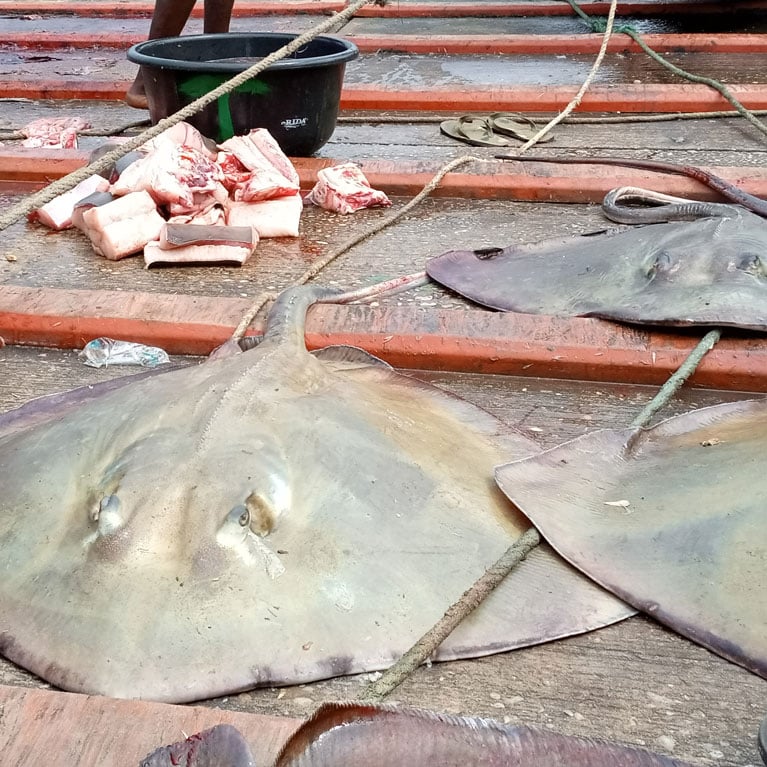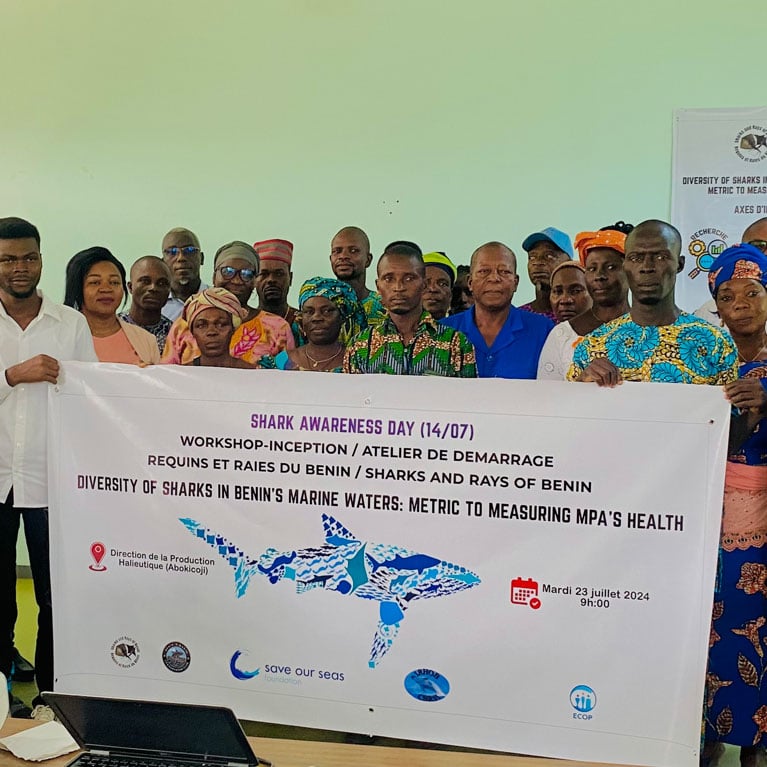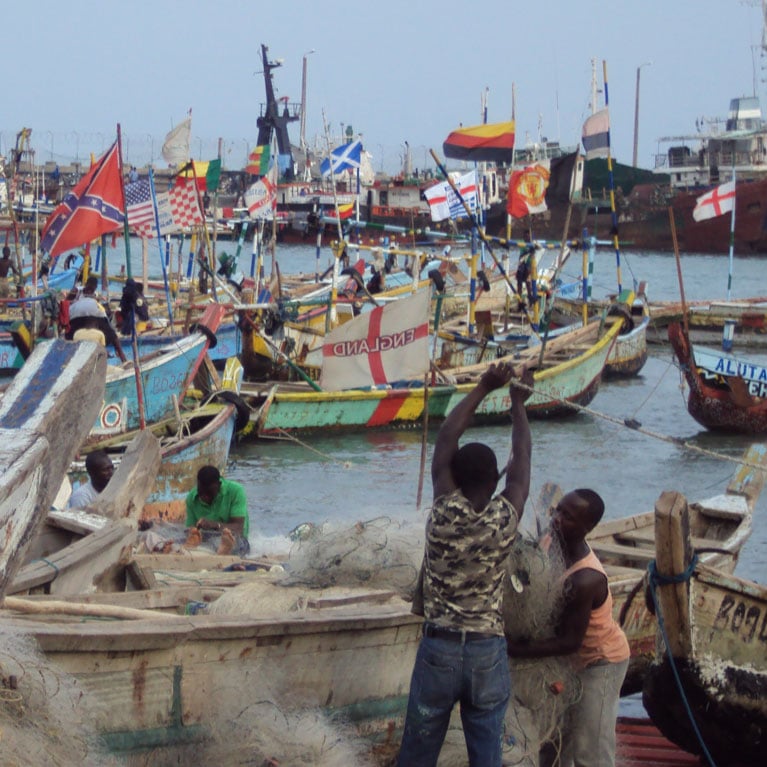A Red List of Benin’s sharks
Emmanuel is compiling a Red List of threatened sharks in Benin’s waters, and sparking new inspiration for a community-driven conservation initiative in the country. With the designation of two marine protected areas (MPAs) by Benin’s government, understanding the current and historical distribution of sharks is key to the effective management of their populations in the protected zones. But the paucity of information on shark diversity and distribution, and the lack of a shark management plan, mean that Benin’s sharks remain vulnerable in spite of their protection on paper. By identifying shark species, assessing their population structure and highlighting important areas, Emmanuel hopes to contribute to a management plan.
I’m a fisheries biologist, currently coordinating the Early Career Ocean Professionals Network in Benin. I was born in Porto-Novo, the political capital of Benin, where I grew up before going to Cotonou, the economic capital, for my tertiary studies. I was eight years old when, during an excursion with my Boy Scout group, the ocean wet my toes for the first time. Later, when I was at high school, I made sure I went on any excursion at sea or on rivers. During those trips, our natural science teachers always told my fellow-pupils and me about conserving the...



Diversity of sharks in Benin's marine waters: metric to measuring MPAs' health
The project seeks to establish a ‘red list’ of the sharks in the marine protected areas of Benin and ignite a community-driven conservation process.
Ultimately, this project aims for a long-term and rational use of Benin’s marine ecosystems, particularly for their top predator species. For conservation and restoration purposes, the government has created two marine protected areas within the zone reserved for the artisanal fishery. This zone has been a major hotspot for elasmobranchs. The challenge to protect elasmobranchs within this fishing zone will be addressed through a community-driven conservation process based on the compilation of a red list of sharks in Benin’s marine waters and the mapping of their former and current distributions.
The status of sharks and their relatives at the national level has not yet been evaluated in Benin, although they were inscribed on a red list for the country in 2011. In 1996, the first study to assess the socio-economic value of sharks recorded that more than 10 species belonging to the Carcharhiniformes, Lamniformes and Rhinopristiformes orders were regularly landed on the coast of Benin. Since then, more than a decade of monitoring shark landings has shown that many species previously reported are no longer landed. These include species of the Alopiidae, Pristidae and Galeocerdonidae families. Moreover, statistics relating to shark fisheries are not species-specific and therefore do not show trends in landings. Benin is a Party to CITES but does not have a national management plan for sharks and their relatives due to the lack of reliable data for these species. Fishermen operating in the first five nautical miles of Benin’s exclusive economic zone have revealed that the presence of sharks in this zone improves their catches of other fish that are their main target.
Insufficient information about the distribution, demographics and exploitation of sharks and about threats to sharks in Benin’s waters could hinder the conservation of these species. As a solution, in 2021 the government of Benin created two marine protected areas within the artisanal fishing zone for the conservation of marine organisms in these waters. Therefore, this project aims to provide those involved in shark conservation with information about species that occur year-round and seasonally, their distribution and conservation status, and about how they are exploited. This information will take the form of a red list and will inform policies and be the foundation of a management plan for the sharks of Benin. The project also aims to spark community-driven conservation initiatives.
- To identify the shark species and make known their population structure in Benin.
- To diversify the sources of information to ensure a long-term collection protocol.
- To identify important areas for sharks and persuade stakeholders of the need to conserve sharks and the areas important to them.

